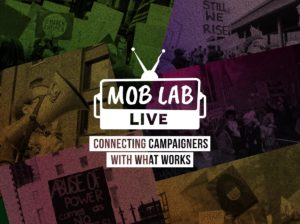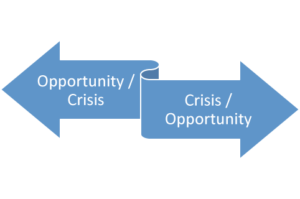It may sound counterintuitive, but a smaller email list can actually increase an organization’s number of opens, click-through rates and conversions.
That’s what Corporate Accountability International (CAI) recently found after spending nearly two years examining its list and building the internal consensus to cut nearly 40 per cent of its email subscribers.
Tim Arsenault, CAI’s membership and data administrator, says before embarking on the email analysis, he’d fallen into a trap that may be familiar to other nonprofits. He was reporting on what The Lean Startupauthor Eric Reiss calls “vanity metrics,” information that might sound good but is disconnected from actual progress of goals and desired final outcomes.
Each week, Tim was responsible for sharing CAI’s email list size and growth to the leadership team.
Email List Clean-up Tips
- Divide your email lists into active and inactive subscribers
- Cut inactive subscribers
- Focusing on active, seperate subscribers who have been active within an appropriate timeframe
- Send a last chance email to people who haven’t opened an email within this timeframe
- Cut subscribers who do not respond to your last chance email
- Combine these actions with testing, and focus on better email messaging
For nonprofits like CAI, whose organizing strategy is to engage and mobilise tens of thousands if not hundreds of thousands of people, list size is an important metric, says Sarah Doltich, CAI’s managing director of communications.
It’s people power challenging the abuses of some of the world’s most powerful corporations that helps the Boston-based nonprofit succeed in its mission to protect human rights, public health and the environment.
“We wanted to grow our list as an indication of a group of people we could activate that would be our power base,” says Sarah.
But, as Tim and Sarah can attest, list size is a means and not an end. The real goal is building engaged supporters who act with CAI.
Tim credits attending a presentation on cleaning your email list, where the presenter recommended removing unsubscribes and anyone that hasn’t opened an email in the last year, as motivation to begin exploring CAI’s email list and metrics.
While CAI’s email open and click-through rates were in line with the industry average, Tim wanted to dig deeper to learn about who was opening emails, and how frequently.
Tim began to separate the list into active and inactive emails. He found CAI’s email list included many inactive emails, which are all email addresses the host would not send to because people have unsubscribed, reported the emails as spam, or had entered their emails incorrectly or the emails were non-existent.
Focusing on the active emails (all emails CAI could actually send emails to), Tim segmented this group into people who opened CAI emails, and those who hadn’t.
Over the years, CAI has grown its email list through organic growth and partnerships and some voluntary acquisitions, contributing to its large subscriber base. Tim found that some of these people have never opened an email from the nonprofit.
Tim separated the open email list once more, creating a separate group for people who haven’t opened a CAI email within one year.
As a result of many un-opens, some of CAI’s emails never made it to their subscribers, but instead their spam folder.
Based on their findings, Sarah and Tim decided it would be best to cut all of their email addresses who hadn’t opened an email within a year, decreasing their list to people who have opened a CAI email within the past 12 months.
With a better handle of the numbers, Tim and Sarah would need to educate the executive team on the need to cut subscribers who weren’t opening CAI emails.
Making the case for deleting inactive emails would be an easy argument. However, it’s more difficult to explain why you should cut a swath of people simply because they haven’t opened an email in a year. What if they are a donor, or eventually opened an email and took action? What harm is there in keeping them?
“The truth of the matter is if they haven’t opened an email from us in more than a year since they’ve been on, or more than five years, chances are they’re not going to open an email and it’s just hurting us and it’s not giving us more power,” says Tim.
Sarah and Tim took time to explain spam scores and what it meant to be on a spam list to the leadership team. They emphasized how a large number of people not opening their emails results in more of their emails ending up in people’s spam boxes.
To reinforce their point, a staff member tested a CAI email, which promptly went to spam.
Regarding the concern of cutting off current or potential donors, Sarah says they had to explain to the leadership team that email is only one form of communication, and if they haven’t opened an email in a year, they’re not engaged with CAI’s email. CAI has a multi-engagement strategy and direct mail, telephone calls or web content might be more appropriate ways to engage.
It wasn’t an easy sell, and took time and much negotiating. Sarah and Tim recall wishing they had another organization that has cleaned their list to point to as a best practice.
The leadership team eventually agreed, and CAI sent a last chance email to people who had an active email but hadn’t opened an email in at least a year. The last chance email let people know that CAI didn’t want to bother them, and as a result were deleting them from their email list. If they’d like to stay on the list, they were encouraged to click on a link to keep receiving CAI email.
The last chance email was sent to tens of thousands of subscribers, yet only several hundred choose to opt-in, which Tim says reinforced their argument to delete them.
The cuts came at the end of the year, and directly before CAI’s largest fundraising opportunity, its annual year-end appeal.
Yet the results were very appealing.
Despite the list being 40 per cent smaller, the open rate doubled, and the click-through rate rose by 50 per cent. CAI also raised more money than last year’s year-end appeal.
“It’s night and day,” says Tim on the changes. “We have such a healthier list and we’re able to measure how well our emails are doing so much better because it’s not watered down with all of these inactive emails that are basically just going into a black hole never to be heard from again.”
Unforeseen Advantages
While the increase in opens, click-throughs and donations were enough to validate the smaller list size, Tim and Sarah say they’ve also discovered several unforeseen benefits.
Now, email test results are coming back statistically significant. With the larger list size, any A/B test other than a subject headline would come back statistically insignificant because of the number of inactive subscribers.
This is helping CAI learn valuable insights from its testing that it can apply to future emails.
As a result of a smaller and healthier email list, CAI team members also have a much better idea of who their subscribers are, and can message accordingly.
The email list cleaning was done simultaneously with improvements to email messaging, better online content and optimized web pages.
Tim adds they can now say confidently that 90-95 per cent of their email list will take action in the course of a year.
Shift to Smart Metrics
Tim and Sarah along with Echo Ditto’s Jesse Littlewood recently presented on Vanity Metrics versus Actionable Metrics at the Nonprofit Technology Conference 2013. The presentation used the Lean Startup definition for smart metrics, which states good metrics are auditable, accessible and actionable.
For Tim and Sarah, the actionable definition was most important, helping them shift from seeing email list size as a goal to understanding how metrics should tell a story, and tell you what to do.
“It’s important to remember the people behind the list. Who are they, what compels them to take action, how are we engaging them, are they unsubscribing or taking action?” says Sarah.
“Really thinking about and remembering the people behind the email list helped us visualise what makes a smart metric.”
Beyond Email List Size
Tim and Sarah say they still plan to include their email list size as part of their metrics and grow their list through paid and voluntary acquisitions, as well as cross promotions.
The team is hoping what they’re learning through testing and smarter messaging will help them keep and cultivate an engaged power base. They also plan to focus on creating successful welcome emails to engage potential supporters from the start.
“It’s one thing to add 10,000 names to your list but it’s another thing to keep them on your list,” says Tim.
Quarterly, CAI plans to evaluate its email list to better understand its base and adjust accordingly. Annually, they plan to make cuts when needed to keep its list size healthy and engaged.
This article is part of a MobLab series exploring how to increase email opens and response rates. The 2013 eNonprofit Benchmark study, found an overall decline in email response rates in 2012.
Stay Connected: @StopCorpAbuse
Related Posts:
E-mail open rates spike when organizers add amusing extras
Top ten tips in email writing from organisations changing the world
Do you have an innovation in mobilisation and people-powered campaigns? Share it with Mob Lab by contacting moblab@greenpeace.org.
Categories:
tech, tools and tactics


